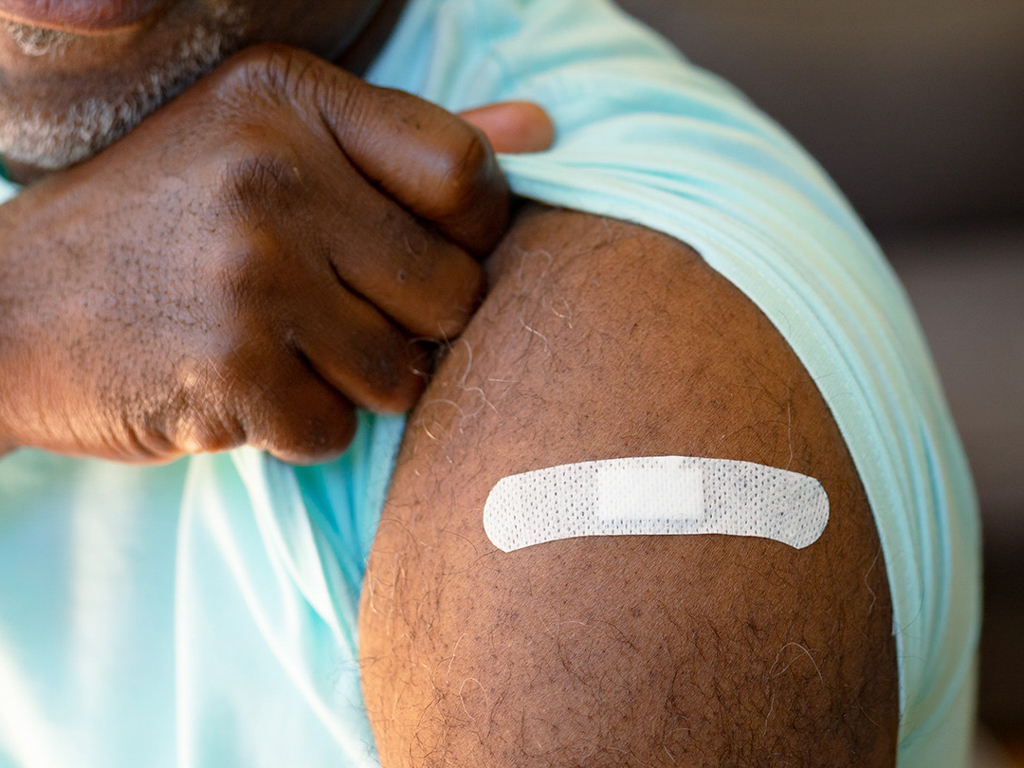Every woman’s health story is unique, but finding breast cancer early can make it easier to treat. Too many families know the impact of this disease—it impacts hundreds of thousands Americans each year. But outcomes improve significantly when cancer is found early.
When you know your risks, see the warning signs, and follow the recommended breast cancer screening guidelines, you give yourself the best chance at early detection.
While not every symptom means cancer, being aware of changes in your body is an important first step to protect your health.
THE IMPORTANCE OF EARLY DETECTION
Breast cancer generally has no symptoms, so catching cancer early often means more treatment options and better survival rates. According to the National Cancer Institute, the five-year survival rate for localized breast cancer (cancer that has not spread outside the breast) is 100%. That number drops significantly when cancer is found at a later stage. This is why screenings, self-awareness, and regular checkups matter.
EARLY SIGNS AND SYMPTOMS OF BREAST CANCER
The early signs of breast cancer can look different for everyone. Some people notice symptoms like a new lump, breast pain that won’t go away, or tenderness in the underarm. Some may experience swelling or a change in the size or shape of one breast. Sometimes the skin on the breast may dimple or pucker, or the nipple begins to turn inward when it hasn’t before. Another sign to take seriously is fluid leaking from the nipple—especially if it’s bloody.
Even though conditions other than cancer can cause these symptoms, it’s always best to check with your doctor.
BREAST CANCER RISK FACTORS
Certain factors can increase the chance of developing breast cancer, but having one or more risk factors does not mean you will get the disease.
The biggest risk factors for breast cancer are simply being a woman and getting older, according to the CDC. Most cases are found in women over age 50, and those are things you can’t change.
Family history is also a factor, especially if you have a close relative diagnosed at a younger age. Lifestyle choices matter, too. Drinking alcohol regularly, being overweight after menopause, or not getting enough exercise and leading a sedentary lifestyle can all raise the risk for cancer. Other factors that can contribute to breast cancer risk include:
- Genetic mutations such as BRCA1 and BRCA2, which can greatly raise the risk
- A personal history of breast conditions
- Women with dense breasts
Learn more about reducing your risk of breast cancer from this Intermountain Healthcare guide.
HOW TO CHECK FOR BREAST CANCER
You can catch changes earlier by paying attention to how your breasts usually look and feel.
Helpful ways to stay aware include noticing if one breast looks or feels different from the other, recognizing new areas of pain or tenderness, and checking your skin and nipples for changes during routine activities such as showering or getting dressed. If something feels or looks different or unusual, don’t wait—talk to your provider right away.
This simple habit of self-awareness can give you confidence and help make sure potential problems are found and addressed early.
WHEN SHOULD YOU GET A MAMMOGRAM?
Mammograms can find breast cancer before symptoms appear, often when it is most treatable. That’s why they are an important screening tool for early detection.
The U.S. Preventive Services Task Force recommends women ages 40-74 get a mammogram every two years.
PROTECT YOUR HEALTH WITH PREVENTIVE CARE
Caring for your breast health is more than just scheduling mammograms. It includes making healthy choices, staying physically active, limiting alcohol, and maintaining a healthy weight.
Being open with your healthcare provider about changes or concerns also makes a difference. Combining healthy lifestyle habits with regular screenings puts you in the best position to prevent or detect cancer early.
If you notice changes in your breasts, don’t ignore them—reach out to a provider. And if it’s time for your next mammogram, make the appointment today.
Select Health wants members and communities to live their healthiest lives possible. Most Select Health plans cover preventive care at 100%.
Explore Select Health plans to see how you can stay on top of your health and protect your future.
This article is intended for informational purposes only and is not legal or medical advice. Links to other sites are provided as a convenience, but Select Health does not endorse the third-party sites, information, or services.
Related Articles



